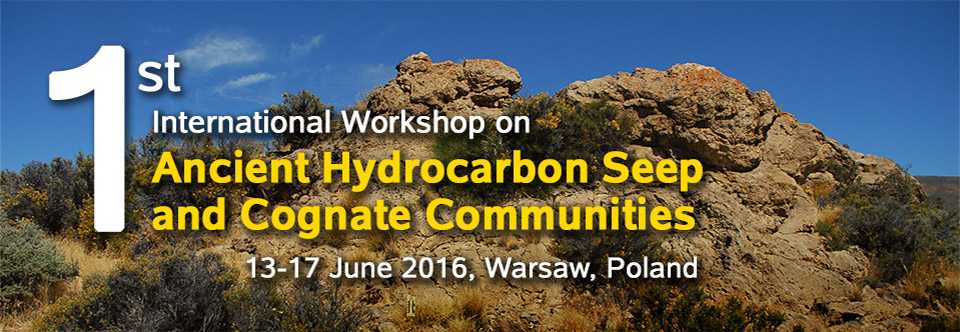
THE LOW STABLE CARBON ISOTOPE RATIO OF ECHINODERM SKELETONS IN HYDROCARBON SEEPS: EFFECTS OF FOOD SOURCES, OR AMBIENT WATER?
Moe KATO1, Tatsuo OJI2, and Tatsuya UNUMA3
1Nagoya University, Nagoya, Japan; 2Nagoya University Museum, Nagoya, Japan; 3Hokkaido National Fisheries Research Institute, Kushiro, Japan.
Corresponding author: katou.moe@d.mbox.nagoya-u.ac.jp
Recent discoveries of modern and fossil echinoderms from hydrocarbon seep environments have led to documentation of chemosynthetic community taxa including ophiuroids, holothuroids, echinoids and at least one species of crinoid (e.g., Gaillard et al. 2011; Landman et al. 2012). Fossil echinoderms show low δ13C values, normally less than -20‰ in their skeletons, which is a clear contrast to much higher values, approximately ±5‰ in chemosynthetic bivalve shells (e.g. Mae et al. 2007). Thus it is suggested that low δ13C values in fossil seep echinoderms should be derived from an isotope fractionation due to vital effect, or from different carbon sources other than from sea water, such as diets or methane-derived carbons. To investigate the effects of stable carbon isotope ratios of sea water and the effect of diets in echinoderm skeletons, a modern echinoid species (Strongylocentrotus intermedius) was raised under the following conditions; 1) in normal and high δ13C sea water containing 13C-labeled bicarbonate, or 2) on two different diets (a kelp (Saccharina longissima), δ13C is about -13‰ and a land plant (Fallopia sachalinensis), δ13C is about -30‰). After four weeks of rearing, the echinoids raised in 13C-enriched sea water produced their skeletons with higher δ13C values than those in the normal sea water. Also the skeleton of echinoids fed on the land plant diet showed lower δ13C values than that on the kelp diet. Therefore, it suggests that δ13C values of echinoid skeletons are influenced by carbon isotope ratios of both sea water and diet. It is concluded that the low δ13C values of fossil echinoderm skeletons should mainly be caused by their food sources influenced by methane of hydrocarbon seeps. In contrast bivalve shells are apparently less influenced by their diet than are echinoderms.
References
Gaillard, C., Didier, N., and Jacques, T. 2011. Tithonia oxfordiana, a new irregular echinoid associated with Jurassic seep deposits in south-east France. Palaeontology 54: 735–752.
Landman, N.H., Cochran, J.K., Larson, N.L., Brezina, J., Garb, M.P., and Harries, P.J. 2012. Methane seeps as ammonite habitats in the U.S. Western Interior Seaway revealed by isotopic analyses of well-preserved shell material. Geology 40: 507–510.
Mae, A., Yamanaka, T., and Shimoyama, S. 2007. Stable isotope evidence for identification of chemosynthesis-based fossil bivalves associated with cold-seepages. Palaeogeography, Palaeoclimatology, Palaeoecology 245: 411–420.
